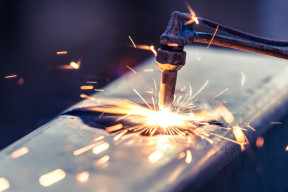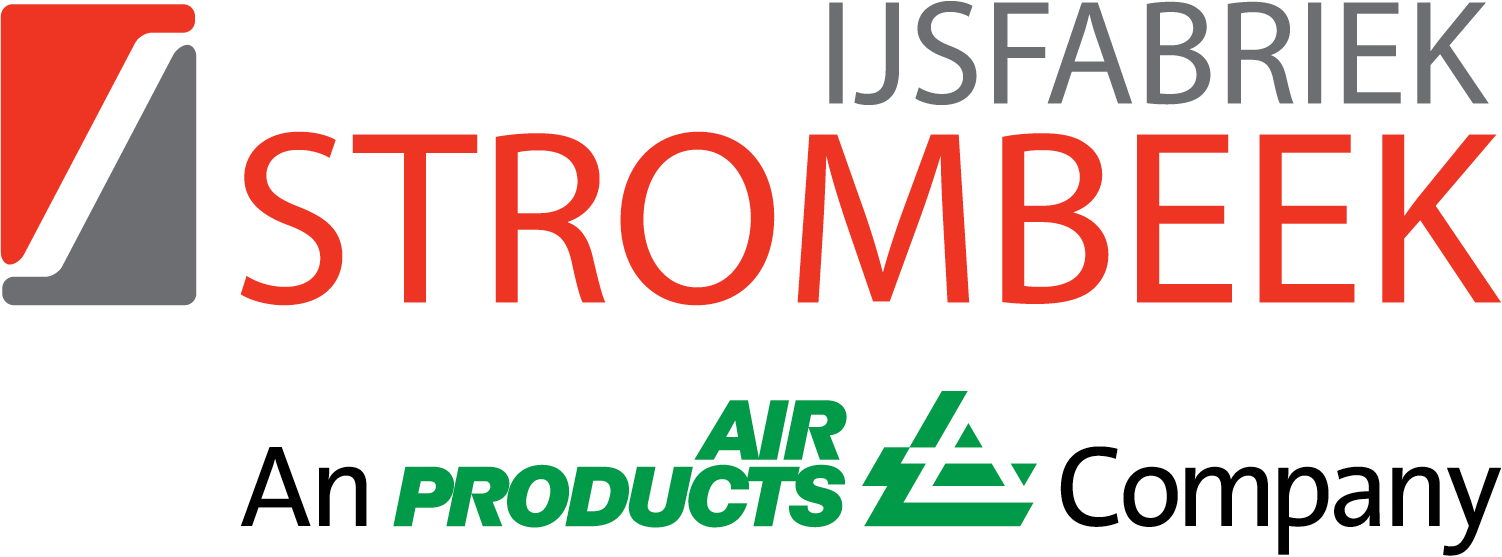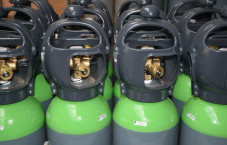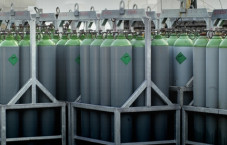Autogenic welding and cutting

Process
The relationship between all autogenic processes is that the flame originates from combustion of a gas with oxygen or air. This flame must produce a targeted and highly concentrated heat. The heat required determines which gas combination shall be chosen.
The most commonly used combinations are oxygen with acetylene and oxygen with propane.
Autogenic cutting
During this process, one does not melt the workpieces, but burn them using a cutting torch.
The workpiece to be cut is by means of a highly flammable gas in combination with oxygen brought to ignition temperature, after which the extra added oxygen starts and maintains the oxidation process. The iron oxide that is formed, has a much lower melting point than the iron itself, and flows out of the cutting area. When clotting it forms a slack.
Autogenic cutting is possible only in the case of materials which have a sufficient heat release to maintain the reaction, e.g. with iron. Steels with a high carbon content cannot be worked on with this, because the melting point thereof is too high and because the released slack is not sufficiently blown away.
In the first phase of cutting with a cutting torch, the workpiece is preheated until it is red-hot. This is the temperature at which it burns under the influence of oxygen.
In the second phase, by adding extra oxygen, the actual burning of the material for cutting is achieved. Hereby follows the reaction: 4 Fe + 3 O2 → 2 Fe2O3
Autogenic welding
With the autogenic welding, two metal parts under the influence of heat are united to one whole. The principle is identical to that of the autogenic cutting, with the difference that one does not burn the material to be processed, but creates a melting pool between the two metal parts to make them connect to each other.
Eventually one makes use of an added material to achieve the connection.
Adjusting the welding flame is important. A surplus of oxygen ensures that the workpiece is burnt, a surplus of acetylene cannot burn on time and gives too little heat.
Requirements
Autogenic cutting
Autogenic cutting is done both with manual equipment (a cutting torch) as well as on cutting tables.
IJsfabriek Strombeek delivers the gases that are required for autogenic cutting:
- Oxygen
- Acetylene
- Propylene, propane, hydrogen gas and gas mixtures such as MAPP-gas
The combination of oxygen and acetylene provides a flame temperature of more than 3100°C.
Autogenic welding
The equipment and gases used for autogenic welding are the same as for autogenic cutting, with the exception of the added material that (possibly) can be used to connect two workpieces together.
Advantages
- The equipment is relatively inexpensive and can be used for both processes
- Autogenic welding and cutting is done without electricity and can therefore be applied everywhere
- One can weld without the use of an additive material
- It is not possible to weld not or poorly conductive metal
IJsfabriek Strombeek has in addition to the necessary gases a wide range of cutting burners, autogenic sets, hoses, check valves and decompression material for both the autogenic cutting as well as autogenic welding
Delivery Forms


